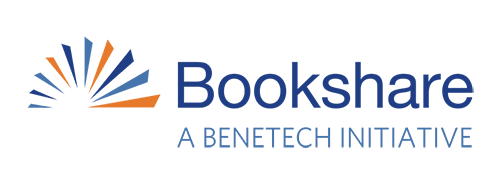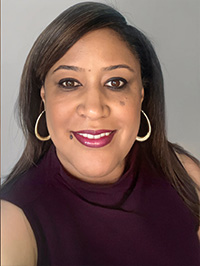What is Bookshare and how can educators and students access its services?
Page 3: What is Bookshare?

Sponsored by the U.S. Departmentof Education’s Office of Special Education Programs, Bookshare strives to provide free access to AEM for all students with print disabilities so they can pursue and achieve their academic, social, and leisure goals.
Although AEM is crucial in supporting learners with print disabilities, knowing where to start can be difficult. But rather than scouring websites or creating these materials, educators can enroll their students with print disabilities in Bookshare. This free, user-friendly source of AEM offers over 1 million educational resources, including children’s and young adult books, textbooks, bestsellers and award winners, technical skills books, newspapers, and more. Bookshare’s comprehensive collection of materials is:
- Available free of charge to eligible U.S. students with print disabilities
- Offered in a variety of accessible formats
- Compatible with computers, tablets, smartphones, and various assistive technology devices (e.g., braille notetakers, augmentative and alternative communication) devices
braille notetaker
A portable device that can be used to take notes in braille, which can then be converted to speech, braille, or text.
augmentative and alternative communication (AAC)
A family of alternative communication methods used by individuals who are unable to readily communicate via speech; these methods can include communication boards and books as well as computerized voices.
Did You Know?
Bookshare operates under a U.S. copyright law exemption that allows it to provide AEM to eligible individuals. Bookshare has agreements with over 900 publishers worldwide and typically receives digital formats of books the same day print versions are released, meaning there is no delay in access.
Bookshare’s collection is extensive and easy to access, providing many benefits for both students and educators beyond those listed above.
| Benefits for Students with Print Disabilities | Benefits for Educators |
|
x
individualized education program (IEP) A written plan, and an Individuals with Disabilities Education Act (IDEA) guiding principle, outlining the education of a student with a disability who is eligible for special education services. This document is developed by an IEP team and is reviewed on an annual basis; it includes the student’s current level of development, their learning goals, and the services and supports they require to attend school and receive educational benefit. x
504 plan A plan that specifies the accommodations and modifications necessary for a student with a disability to attend school alongside their peers. Named for Section 504 of the federal Rehabilitation Act of 1973—which prohibits discrimination against individuals with disabilities—this type of plan ensures that children with disabilities have equal access to public education. However, students with 504 plans do not meet the eligibility requirements for special education under IDEA. |
To be eligible for a Bookshare membership, students must have a verified print disability in accordance with the Chafee Amendment to U.S. copyright law. For PK–12 students, verification of a print disability is generally provided by a school professional (e.g., school psychologist, special education teacher, reading specialist, school librarian, teacher of the visually impaired). Specifically, students must be unable to interact with standard printed materials because they cannot:
- Hold or manipulate such materials due to a physical disability
- Perceive standard printed materials due to a learning disability
- See standard printed text due to a visual impairment
For Your Information
Although Bookshare believes in the importance of making accessible text available for everyone who needs it, the organization is bound by copyright law to authorize access only for individuals with print disabilities. Therefore, some people who might benefit from accessible text may not be eligible for Bookshare. For example, an English learner (EL) who struggles with reading but does not have a print disability would not be eligible. Likewise, a student who has a physical disability but does not have difficulty reading printed text or holding a physical book would not be eligible.
In the interviews below, Nicole Harris and Brian Meersma offer a teacher and student’s perspective respectively on how Bookshare can support students.
Transcript: Nicole Harris
The whole point of Bookshare is to provide that inclusive, equitable environment. And I think it’s really important because Bookshare does do that. It helps support those students who have those reading barriers. Bookshare supports my students by enabling them to read in ways that work for them with those assistive reading features, such as easy-to-read formats like audio, audio plus highlighted text, braille, and other tools. They can download the books that I have assigned them, and they are able to read and comprehend the material with everyone else in the classroom—with the support that they need. With the features that Bookshare provides, my students are empowered to be lifelong learners.
Transcript: Brian Meersma
So I started using Bookshare in middle school, and at the time I was using it with a laptop. And it was really the first time that I was able to read and enjoy a book independently. So following along with the highlighting and seeing the words that were being spoken was super helpful for me. And then I continued in college as well. In college I got some books through disability services and some books through Bookshare, and that really helped me focus on what the class was about rather than having to struggle through reading very slowly and not getting much of the value out of the books.
Before I used Bookshare, when I wasn’t able to get a book electronically, my grandparents or my parents would read to me. So of course that was really helpful and kind of helped me get started, but it wasn’t allowing me to read independently. And as the reading demands increased as I went up in the grades, that wasn’t going to work out with my parents and grandparents having a lot of other stuff to do. So Bookshare really helped me be independent in that regard and be able to do my schoolwork by myself.
The video below highlights three students with print disabilities and their experiences with Bookshare, including how these accessible materials remove barriers to reading (time: 2:31).
Transcript: Bookshare Removes Reading Barriers
Narrator: Bookshare, a Benetech initiative.
[A girl sits at a computer and puts on headphones.]
Girl 1: I wanted to say I first became aware of Bookshare around sixth or seventh grade, and I was like, “Wow, this is like the best thing ever!”
[A student unzips a backpack to pull out a braille reader.]
Girl 2: I’m on there once a month downloading books. I can’t live without my books [laughs].
[A boy reads on an iPhone.]
Boy: When people ask me what’s Bookshare like, I say it’s like you doing something that you’ve never done before.
[Lights come on in a school gym.]
[Students walk the hallways.]
Teacher: Our students have such a wide range of disabilities that it takes a very large toolbox. So Bookshare offers for some kids that just need an enlarged print or a highlighted text or student that needs audio with their text.
Girl 1: You can switch the contrast, making the text bigger.
Boy: You can change how the voice sounds.
Bookshare reader: Page 26 of 2617
Boy: And you can also change the speed that it reads.
Girl 2: Pretty much anything that I want in braille, I can look for it on Bookshare.
Teacher: I would say it’s just like walking into the library.
Girl 1: Well, for somebody who’s, you know, kind of in my same boat, I would say, you know, “You can do it, and don’t let anybody tell you that you can’t.”
[Students walk through a campus.]
Boy: Twenty years ago they didn’t even know about dyslexia. It was more of people telling me, “You’re not going to make it” and a lot of people, like, trying to push me down after they figured out that I was dyslexic. And then I got Bookshare. It kind of, like, broke open the barrier.
Girl 2: Broadens my horizons. I feel like I can go places and do things within those books that I can’t go and do in real life.
Girl 1: You know, I remember having Bookshare on my iPad for the first time and realizing that I can sit on the couch and read a book on the couch because, prior to that, it was under a physical book under my CCTV.
Boy: I wouldn’t have been able to make it this far without Bookshare.
Girl 2: There are worlds open to you through Bookshare.
Girl 1: Bookshare will definitely be a part of my life for the rest of my life.
Narrator: Bookshare, a Benetech initiative.
Activity
Read each student scenario below. Using the definition of print disability and the information on Bookshare eligibility above, reflect on whether or not the student would likely be eligible to use Bookshare materials. You may type your answers in the field below the scenarios. However, this field is provided for reflection purposes only; your answers will not be available for download or printing.
- Valeria, whose native language is Spanish, recently joined your classroom and receives specialized services at school to learn English. When she reads and writes in Spanish, Valeria does not demonstrate any literacy delays or struggles.
- Jonah was recently in a car accident and is now paralyzed on one side of his body. He has completed acute rehabilitation, and upon returning to school, will use a wheelchair and receive physical therapy services.
- Leticia has a degenerative eye disorder that results in vision loss over time. Currently, she wears glasses that provide partial vision correction, allowing her to see large-print text. However, she is also learning to read braille in preparation for continued vision loss.
Now that you’ve had a chance to reflect, listen to Lara Rondberg’s feedback (time: 1:02).

Transcript: Lara Rondberg, MSW
The reason why Jonah and Leticia would be eligible for Bookshare is because they both have trouble accessing standard print: Leticia has a degenerative eye condition and benefits from larger font; therefore, a service like Bookshare will provide her access to accessible educational materials. Due to a sudden physical disability, Jonah is unable to hold or manipulate standard printed text. He would benefit from utilizing Bookshare, as he could listen to the text read out loud.
The reason Valerie is not eligible for Bookshare is that she does not display difficulty with reading standard printed text in her native language. She is in the process of learning English, and once she does, she will likely be able to access printed text the same as her peers. She does not have a print disability and, therefore, would not qualify for Bookshare.

